

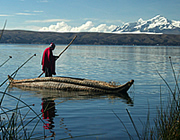
The highest commercially navigable lake in the world has thousands of years of civilisation on its islands and shores. The villagers and Inca remains on beautiful Isla del Sol and Isla de la Luna, and the pre-Inca Urus Indian people on their floating reed islands made for one of the most evocative segments of our South American trip.
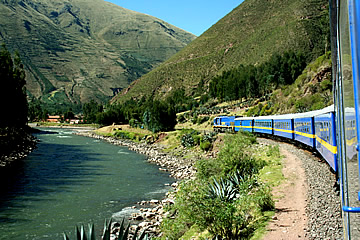
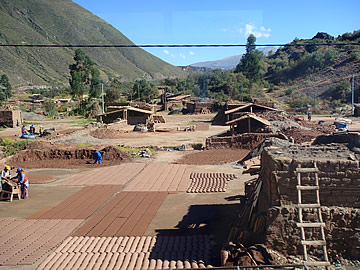
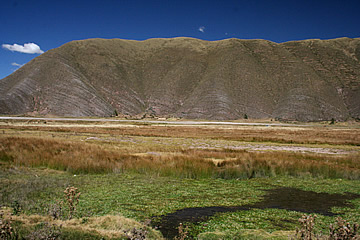
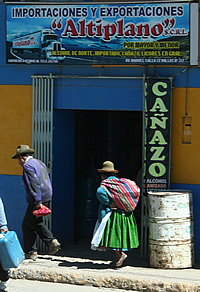
We travelled to Lake Titicaca from Cuzco on the Andean Explorer - a fantastic experience, highly recommended. It's a very luxurious train, with armchairs to sit in, tablecloths, lamps and vases of flowers on the tables. We had a table for two at a window - perfect.
We thoroughly enjoyed the trip. The staff were all very friendly and attentive, serving black tea and welcome pisco sours, an excellent lunch: spinach soup for Andrew and alpaca slices for me to start, then we both had the pork chops with mash and a glass of Chilean sauvignon blanc, passion fruit mousse for dessert.
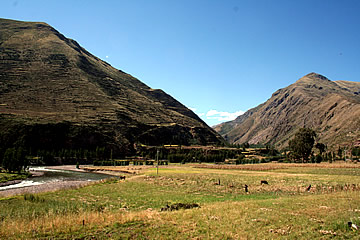
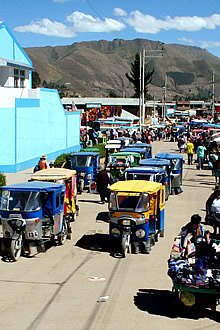
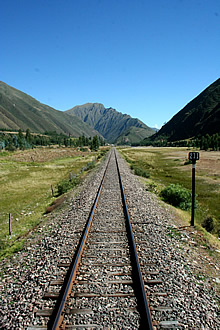
I was fascinated by the people we saw along the way: their dress - particularly the hats of the women, the dwellings and the activities in the towns and fields that we passed through.
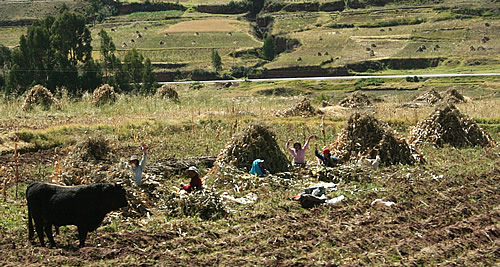
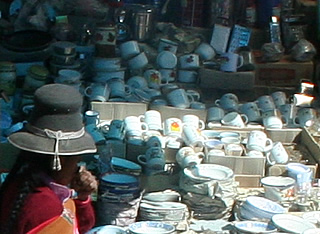
The observation car at the back of the train is preceded by the comfortable bar where entertainment such as Peruvian music and dancing was laid on. The observation car is open at the back and perfect for photography. The views were fascinating, particularly the people in the fields as it was harvest time, and the huge herds of llamas and alpaca.
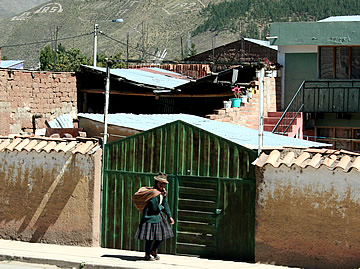
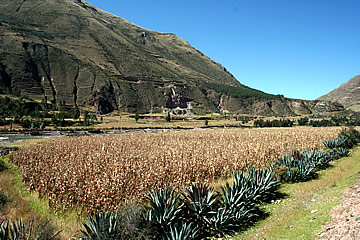
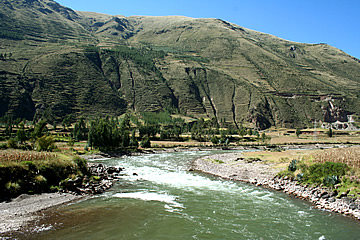
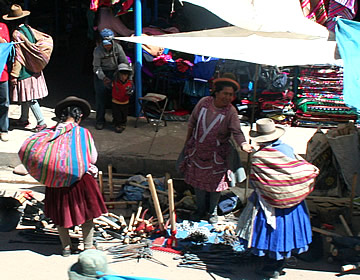
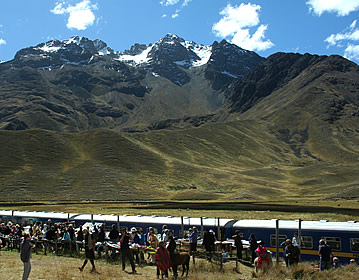
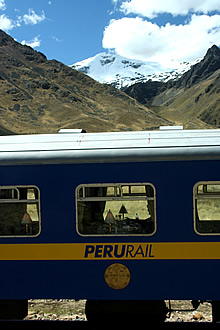
The landscape is magnificent, especially the first half of the journey climbing up to the high point of La Raya, 4321m above sea level and 210 km from Cuzco, surrounded by snow-capped mountains, where the train made a short stop.
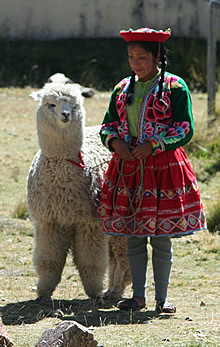
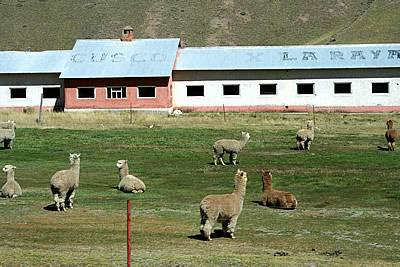
Here the women of the area had set up stalls selling local handicrafts, and, as in many tourist spots, women and youngsters in traditional dress posed with their animals for a small fee.

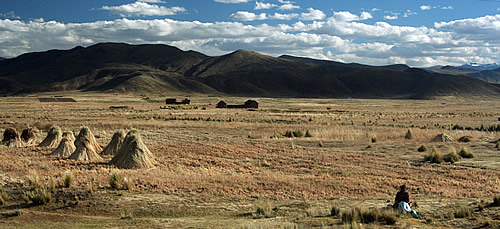
From La Raya the landscape opens up into wide agricultural plains, bordered by low mountains.
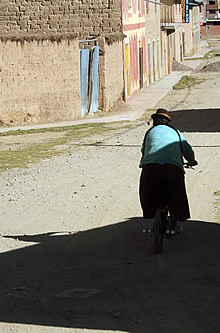
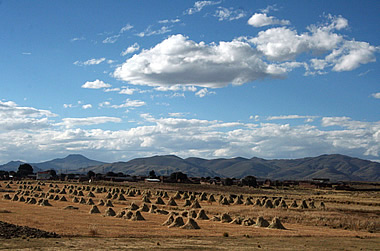
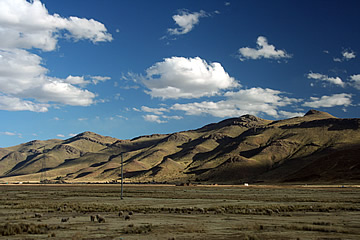
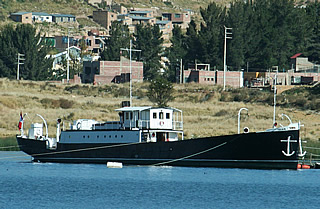
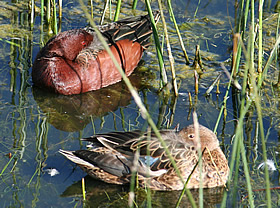
We arrived in Puno on Lake Titicaca after dark. We were really lucky to be upgraded to a suite of rooms in our hotel, the Casa Andina on the shores of the lake. Apart from being vast, with a suitably enormous bathroom, a bedroom that looked out to the side over the lake and a living room with panoramic views over the lake to the town, it also came equipped with oxygen. We had fully acclimatised at this point, having been travelling in Peru for a week already, but it was still nice to have - Puno lies at over 3800m.
Puno is a folklore centre, though mainly a way point for travellers visiting Lake Titicaca and its islands.
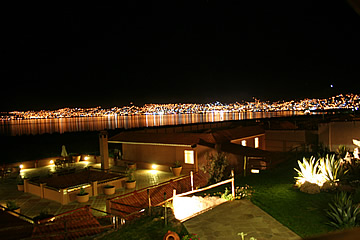
The Yavari, the oldest ship on Lake Titicaca, was moored nearby. She was built in England in1862 and shipped in kit form to Arica, then went by rail and mule to Lake Titicaca. The whole journey took six years. She has been restored and is now moored in Puno Bay.
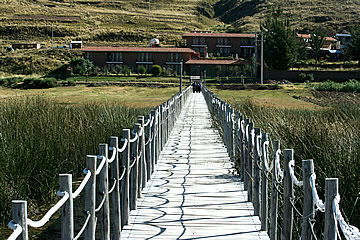
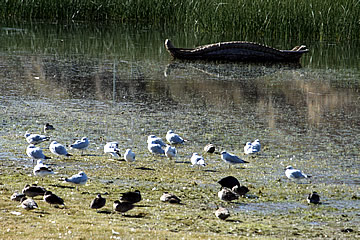
The hotel has a long wooden pier stretching out over the wetlands bordering the lake to a small dock. In the early morning it was very peaceful here, with lots of waterfowl just stirring for the day.
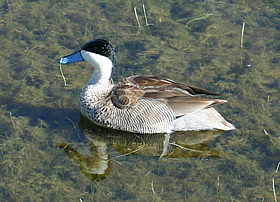

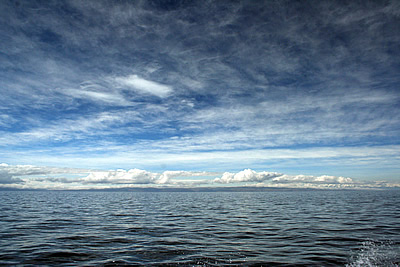
There was a strike and demonstrations going on in Puno and the main road was closed. I believe the protests were about mining concessions on land belonging to the local people. Our agents efficiently rearranged our onward travel so that we crossed Lake Titicaca on the hydrofoil instead of having to make a three hour road journey around the lake to Copacabana; so although very disruptive for many people we actually benefitted from the protests - the trip across the lake was memorable!
Lake Titicaca is vast and the highest commercially navigable lake in the world. High in the Andes at 3811m above sea level it straddles the border between Peru and Bolivia.
It took a few hours to cross to Sun Island where we were staying, but it was a very enjoyable crossing, our guides providing lots of information.

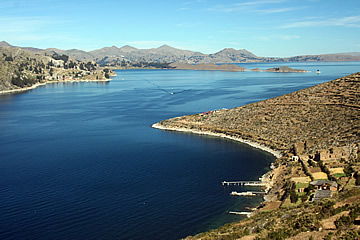
Sun Island in the Bolivian part of Lake Titicaca is the most sacred of all Inca sites. In legend it is the location of the birth of the nation. The origin of the Inca civilisation is shrouded in mystery. Legend has it that Manco Capac and his sister emerged from the waters of Lake Titicaca around 1200AD, created by the Sun god as founders of the Inca race. One version of the legend has Viracocha, the all-powerful creator-god, rising from the lake in a time of darkness, creating the celestial bodies and bringing light. Viracocha had one son, Inti, and two daughters, Mama Quilla and Pachamama. Inti conjured Manco Capac and Mama Ocllo from the waters of the lake to found the Inca civilisation in Cuzco.
In the ancient Aymara language the island is known is Titi'kaka "the puma rock", from which the lake takes its name.
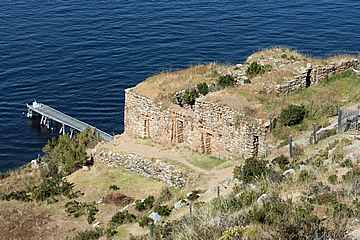
We left the hydrofoil at a small jetty and climbed up to the village of Yumani. Near the landing place were the 15th century AD ruins of the Inca temple of Pilcocaina. Though the stonework is quite rough, it has triple-recessed entrances and domes above small rooms which form quite a labyrinth. The number three was very important to the Incas so triple-recessed entrances and alcoves would have had special significance.
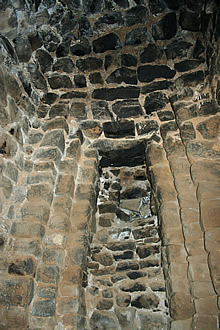
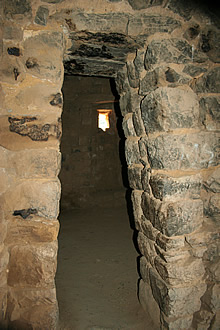
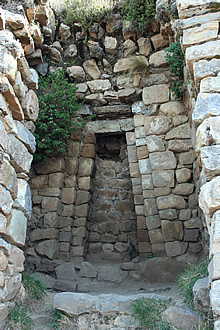
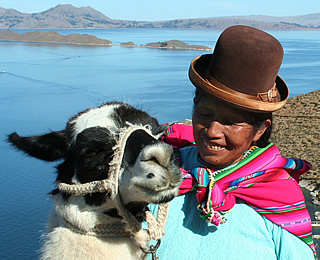
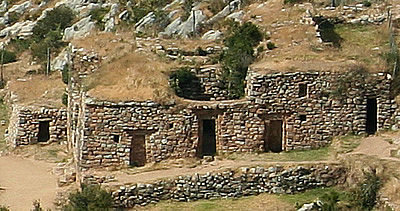
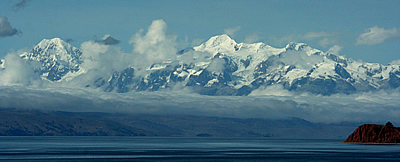
As we climbed the views just got more and more stunning, right across the lake to the High Andes' dazzling snow-capped peaks.
After a fairly steep haul up a series of steps the path levelled out a little and became easier. Our luggage had been taken up for us, fortunately. One of the local women with a llama walked with us to carry any extra bits for a small fee - it's nice to have her carry something so you can make a contribution to the islanders.
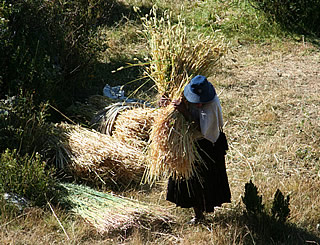
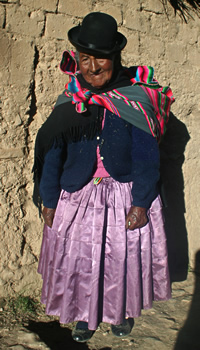
As elsewhere in Peru and Bolivia it was harvest time on the island. This does not look to be a very mechanised activity. The island is steep and the slopes are ridged with agricultural terraces.
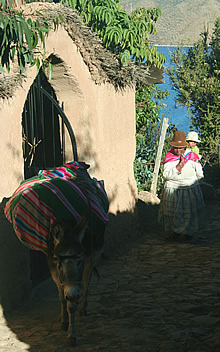
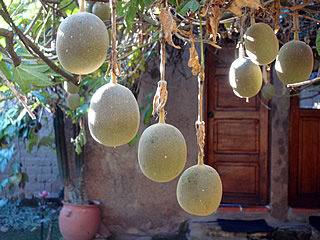
We were staying at the Posada del Inca, a hacienda-style hotel and quite basic but adequate. In the later part of the afternoon we went for a walk along a high-up coastal path. There was a constant stream of villagers climbing up from the small harbour, the ladies all with bundles of goods tied to their backs or with an infant carried the same way, men with some incredible loads strapped to their backs, and many mules also with heavy packs. They were maybe coming back from the mainland, or perhaps from visiting friends or family as it was a Sunday.
We met one wonderful woman in gorgeous finery with her hat set at a jaunty angle. I think she must have been visiting for, though all the women wear colourful skirts and shawls, hers seemed to be particularly special. She allowed me to take a photograph of her for which we gave a small fee.
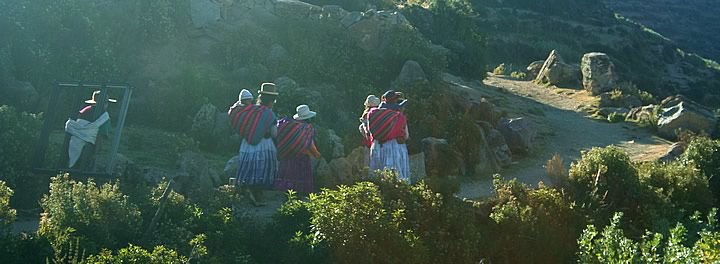
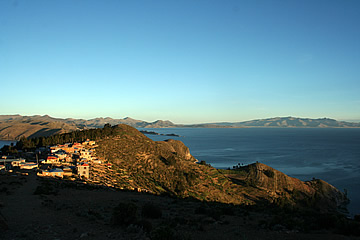
Later we walked with our guide to the lighthouse at the top of the island to watch the sunset. It was quite a walk, and steep, but worth it for the view of the High Andes turning pink as the sun went down. It was freezing up there so we were really glad to come back to a roaring fire in the the hotel's small lounge and cups of hot, black tea.
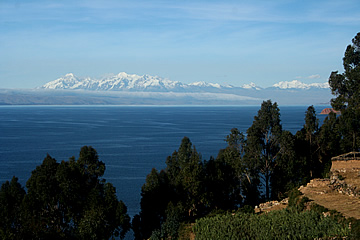
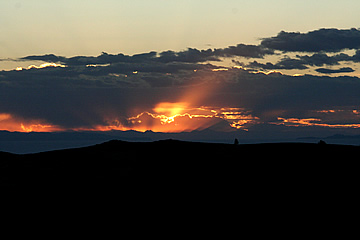
The sky was wonderfully clear. After dinner we went out to look at the stars - the Milky Way in all its glory and a shooting star straight through the middle of the Southern Cross.
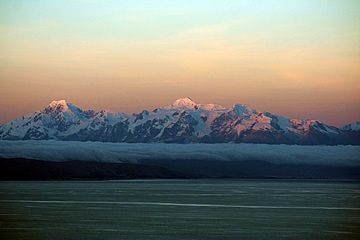
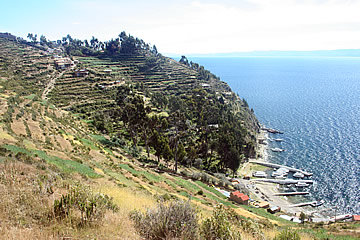
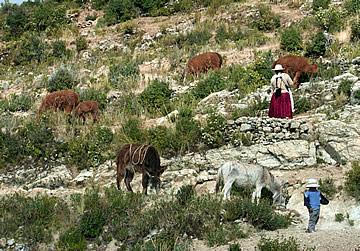
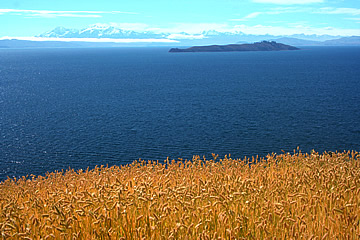
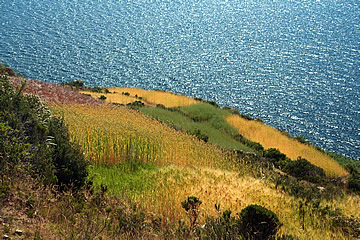
The following morning we explored the island further, seeing very few of the villagers going down to the small harbour - many must have left much earlier. We saw women with small children, usually with a few livestock such as donkeys and llamas, watching while they grazed. One child ran up to us asking for "caramello" - obviously sweets. We didn't have any but as it was getting hot and we didn't have our hats our sunscreen we went back to the hotel to fetch them and see if we could find any sweets. We met our guide and told him about the child - he said not to give him sweets as the dental care on the island is almost nonexistent; maybe toothbrushes would be a good thing to bring for the children.
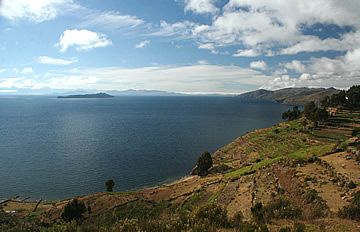
The island is very beautiful, with steep cultivated terraces, some already harvested, others waiting with ripened crops glowing in the sun and the views over the deep blue sea to the Island of the Moon - quite idyllic, though life is obviously quite hard here.
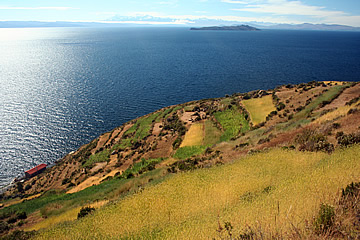
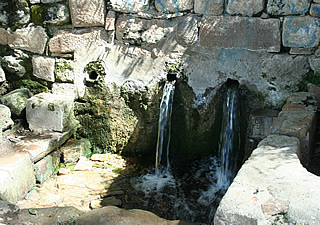
The original Inca steps, over 200, still lead down to the small harbour. We left after lunch, walking down the steps and passing the sacred Inca fountain before boarding the hydrofoil to Moon Island.
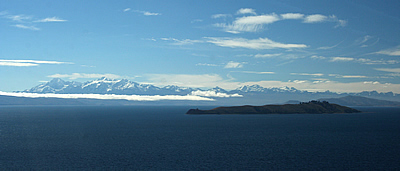
The Island of the Moon, much smaller than the Island of the Sun, is said to be where Viracocha commanded the moon to rise. Before arriving at the island our guide took us through a kind of baptismal ceremony where a bunch of the red national flowers, cantuta, were dipped in water and shaken over our heads while we recited (in the local language) "don't lie, don't be lazy, don't steal".
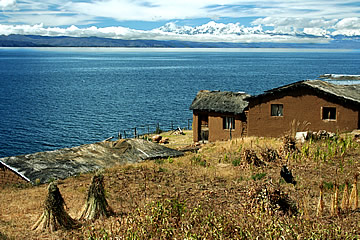
A short but steep climb brought us to the Inak Uyu Sun Virgins' Temple. Our guide told us that this was an Inca temple where women would come to learn various skills. It's an atmospheric spot, very peaceful, with fabulous views across the lake to the Andes.
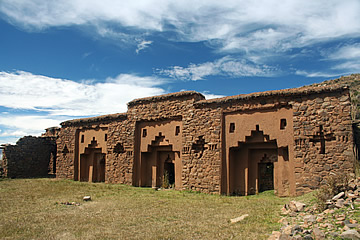
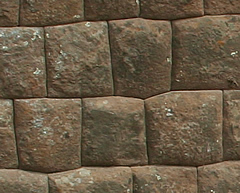
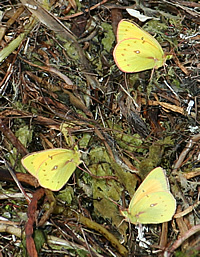
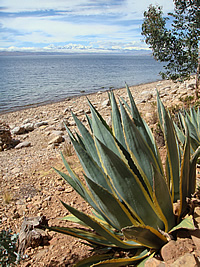
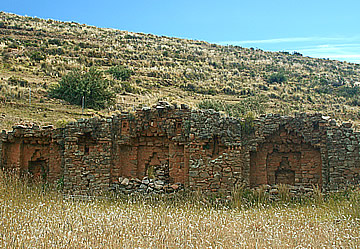
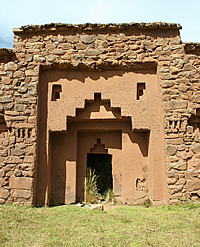
One of the walls of the temple had been restored and shows very well the three dimensional Andean or Inca Cross, representing heaven, earth and the underworld in the three steps, the hole in the centre representing Cuzco, the centre of the Inca universe.
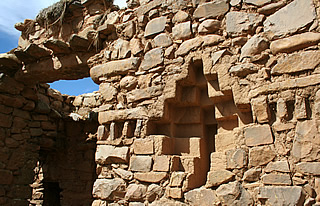
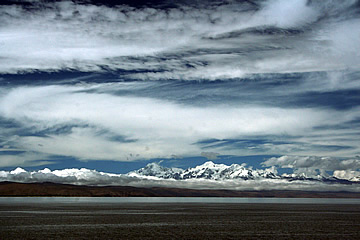
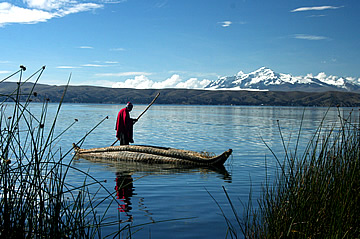
The Urus are a pre-Inca people living on Lake Titicaca on their floating reed islands. They use dried totora reeds to make their boats, houses and furniture, as well as the islands on which they live. They are not averse to using modern technology - for instance the people we visited had a motor boat and, though they still make reed boats, these days they are lashed with nylon rope rather than plaited reed cables. The reed boats last a maximum of 18 months and nowadays wooden boats are preferred by most.
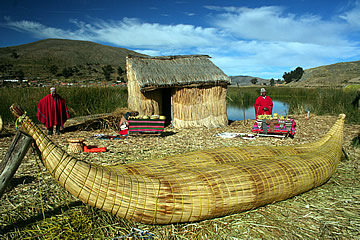
One and a half hours by hydrofoil brought us to the islands on the Bolivian southern side of Lake Titicaca. The lake was so low that they were barely floating. The island we disembarked onto was called Chisawa Island. In the language of the Urus Iruitos the Pukina Chisawa means "medicinal bird" and they give them a mystical curative quality believing that those who live near them become stronger. Only maybe half a dozen of the inhabitants were there including the previous king - his son Ricardo, the current king, was away playing football!
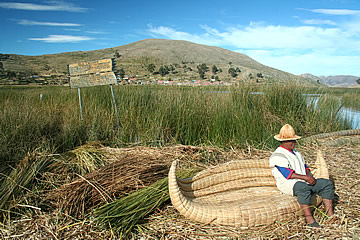
The small reed huts are windowless and very cramped. Potatoes and lake fish would be a typical meal, but fish stocks are diminishing and only three varieties remain, all look to be small fish. They are primarily fishermen so are facing problems and most of the younger people move away, aspiring to be cab drivers in a big city. The people were friendly and smiling and apparently are very peaceful - when an enemy threatened they simply poled their islands into the lake. They had set out tables with items made from reeds: small boats, llamas, etc. and woollen hats, gloves and blankets.
It was a privilege to meet these people but sad that a beautiful and ancient way of life would probably soon die out.